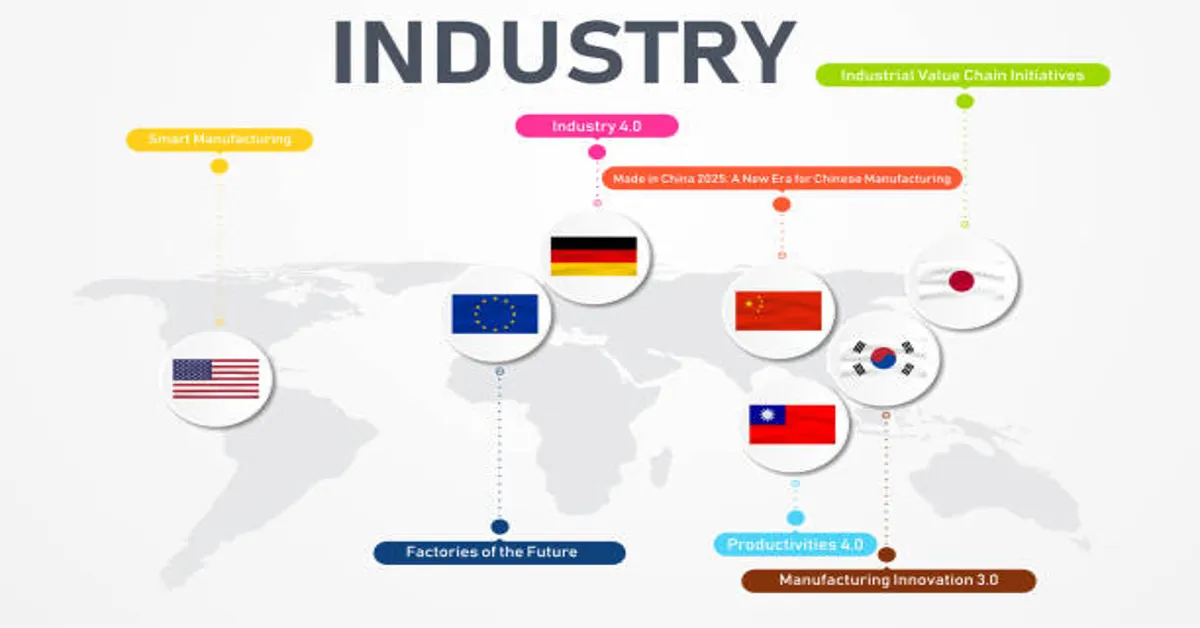Industries are the backbone of modern civilization. They represent the organized production and distribution of goods and services that meet the needs of individuals, societies, and nations. When we speak of industries, we are not just referring to factories and machines; instead, we are talking about a wide spectrum of human activity that connects raw resources with consumer demand. From agriculture that feeds billions to advanced technological industries that fuel innovation, industries define the structure of economies and the standard of living across the globe.
In this extensive article, we will explore industries in detail, starting from their historical roots and classification to their modern significance, challenges, and future opportunities. The discussion will include the various types of industry, their role in economic development, and how globalization and digital transformation have shaped them.
Understanding the Concept of Industry
An industry can be defined as a group of enterprises engaged in the production of similar goods or services. These enterprises often share similar raw materials, processes, markets, or objectives. For instance, the automobile industry is not limited to car manufacturers but also includes suppliers, parts manufacturers, dealerships, and service networks.
The concept of industry has evolved over centuries. In early societies, industry was synonymous with small-scale craftsmanship. With the Industrial Revolution in the 18th and 19th centuries, industry became large-scale, mechanized, and interconnected with global trade. Today, industry are highly diversified, ranging from traditional sectors like textiles to cutting-edge fields such as biotechnology and artificial intelligence.
Classification of Industries
Industries can be classified in several ways, but the most common classification is based on the type of goods and services they produce. Below is a detailed breakdown:
| Category | Examples | Description |
|---|---|---|
| Primary Industries | Agriculture, Fishing, Mining, Forestry | Extract natural resources directly from the Earth. |
| Secondary Industries | Manufacturing, Construction, Textile, Automotive | Convert raw materials into finished products. |
| Tertiary Industries | Banking, Healthcare, Education, Tourism | Provide services rather than physical goods. |
| Quaternary Industries | IT, Research & Development, Data Analytics | Focus on knowledge, information, and innovation. |
| Quinary Industries | Government, Policy-making, Non-profit Organizations | Involve high-level decision-making and leadership services. |
This classification helps us understand the complexity of economies and the interdependence between industry. For example, mining (primary industry) provides raw materials for steel production (secondary industry), which in turn supports construction and automobile manufacturing.
Historical Evolution of Industries
The history of industry can be traced back to human civilization itself:
- Prehistoric Era: Early humans engaged in hunting, gathering, and small-scale tool-making.
- Agricultural Revolution: With the domestication of plants and animals, farming became the first large-scale industry.
- Medieval Era: Craftsmen and guilds dominated industry like blacksmithing, weaving, and carpentry.
- Industrial Revolution (18th Century): Marked by mechanization, steam power, and factory systems, industries shifted from manual labor to machines.
- 20th Century: Mass production, electricity, petroleum, and globalization reshaped industry.
- 21st Century: Industries are defined by automation, artificial intelligence, digitalization, and sustainability.
This evolutionary journey highlights how industry adapt to changing technologies, resources, and human needs.
Key Global Industries and Their Importance
1. Agriculture and Food Industry
Agriculture remains the most fundamental industry, as it ensures food security. The modern food industry also includes food processing, packaging, and distribution, making it one of the largest sectors globally. Innovations such as precision farming, hydroponics, and genetically modified crops are transforming this sector.
2. Manufacturing Industry
Manufacturing is the engine of industrialization. It includes textiles, machinery, automobiles, chemicals, and electronics. Manufacturing generates employment, drives exports, and stimulates economic growth. Emerging trends like 3D printing and robotics are revolutionizing production processes.
3. Information Technology Industry
IT has become the most dynamic and fastest-growing industry. Software development, cloud computing, cybersecurity, and artificial intelligence have created new opportunities for businesses and individuals alike. This industry not only drives innovation but also supports the functioning of almost all other industry.
4. Healthcare and Pharmaceuticals
The healthcare industry includes hospitals, medical devices, pharmaceuticals, and biotechnology. With rising life expectancy and lifestyle changes, healthcare has become one of the most crucial sectors. The COVID-19 pandemic further emphasized the importance of robust healthcare systems and supply chains.
5. Energy Industry
Energy is central to industrial and social activity. The energy industry includes fossil fuels, nuclear power, and renewable energy sources like solar and wind. The global shift toward sustainability is encouraging investments in clean and green energy technologies.
6. Financial Services Industry
Banking, insurance, investment firms, and fintech solutions form the core of financial industry. They provide the capital and risk management necessary for other industry to operate efficiently. Digital banking and cryptocurrency are reshaping this sector.
7. Transportation and Logistics
This industry includes railways, aviation, shipping, and road transport. It ensures connectivity and smooth flow of goods and services. Modern logistics relies heavily on automation, tracking technologies, and global trade networks.
8. Construction and Real Estate
Infrastructure development—roads, bridges, housing, commercial spaces—drives economic activity. This sector employs millions and is directly connected to urbanization and modernization. Sustainable construction methods are increasingly emphasized.
9. Entertainment and Media Industry
From film and television to gaming and digital streaming, the entertainment sector has become a multibillion-dollar industry. It not only entertains but also shapes cultural trends and global communication.
10. Emerging Industries
New industries such as biotechnology, nanotechnology, space exploration, and renewable energy storage are becoming increasingly important. These industry are often knowledge-driven and innovation-focused.
Globalization and Industries
Globalization has interconnected industries across borders. Today, a smartphone may be designed in California, assembled in China, and sold in Europe. Supply chains, outsourcing, and foreign investments have blurred the lines between national and international industry.
However, globalization also brings challenges, such as dependence on foreign supply chains, exploitation of labor, and environmental concerns. Industry must balance efficiency with sustainability and ethical practices.
Industrial Challenges
Despite growth and innovation, industry face several challenges:
- Environmental Impact: Industry are major contributors to pollution and climate change.
- Resource Scarcity: Overdependence on finite resources threatens long-term sustainability.
- Technological Disruption: Automation and AI may reduce employment opportunities.
- Global Competition: Industries face intense competition in a globalized market.
- Economic Inequality: Industrial growth does not always ensure equitable wealth distribution.
Future of Industries
The future of industry will be shaped by technological, environmental, and social trends. Some key developments include:
- Sustainable Industries: Green technologies, recycling, and renewable energy will become central.
- Smart Manufacturing: AI, IoT (Internet of Things), and automation will dominate production.
- Personalized Healthcare: Biotech and data analytics will lead to customized treatments.
- Digital Transformation: All industry will increasingly rely on digital platforms and big data.
- Global Collaboration: Cross-border partnerships will expand innovation and market access.
Conclusion
Industries are not just about economic output; they define the quality of life, employment opportunities, cultural growth, and sustainability of societies. From traditional farming to futuristic space exploration, industry showcase human innovation and resilience. As we move forward, industry must evolve with a focus on inclusivity, sustainability, and technological advancement to ensure balanced growth for all.
ALSO READ: Big Mama 2.0: Evolution, Features, and Cultural Significance
Frequently Asked Questions (FAQs)
1. What are the main types of industries?
Industries are classified into primary, secondary, tertiary, quaternary, and quinary sectors based on their activities and contributions.
2. How did the Industrial Revolution change industries?
The Industrial Revolution introduced mechanization, mass production, and factory systems, transforming industries from manual labor to machine-driven processes.
3. Which industry is the fastest growing today?
The information technology industry is among the fastest growing, driven by AI, digitalization, and global connectivity.
4. What challenges do industries face in the modern era?
Industries face challenges like climate change, resource scarcity, economic inequality, and technological disruption due to automation.
5. What is the future of global industries?
The future lies in sustainable practices, smart manufacturing, digital transformation, and cross-border collaboration for innovation and growth.









